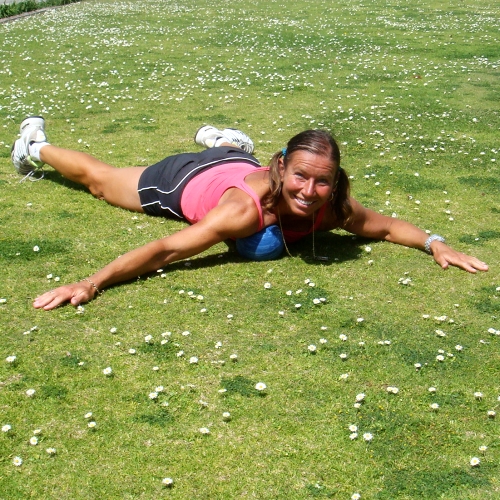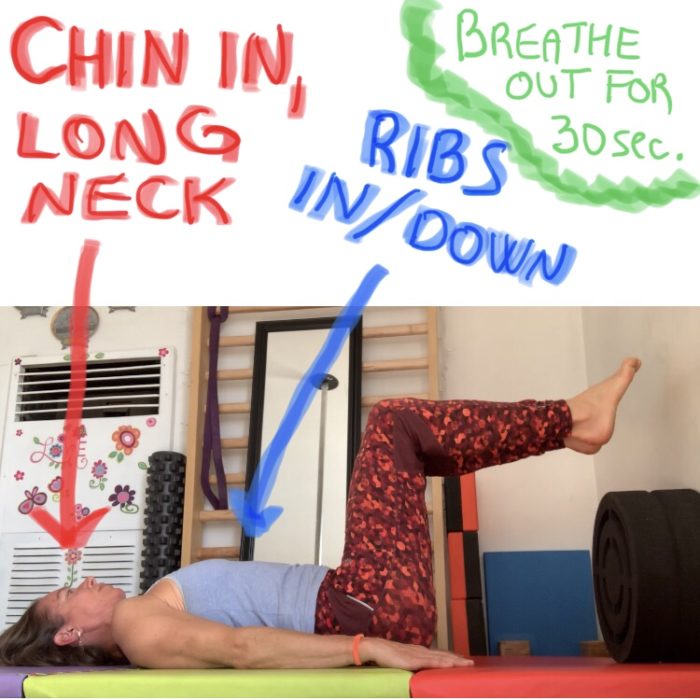Hamstrings are the muscles in the back of the upper leg. In tennis players, they are often too weak. In general population, the hamstrings are often too short and tight, which can cause different issues and aches, including lower back pain.
The hamstrings are extremely important for effective sprinting and powerful running strides on the tennis court. They bend the leg in the knee and straighten it at the hip joint. Hamstring injuries are a common occurrence in tennis. The causes are:
- a serious weakness, especially when compared to the quadriceps (in the front of the thigh)
- insufficient flexibility
- faulty running mechanics
Today’s modern lifestyle with prolonged sitting puts the hamstrings in a shortened position most of the time, which results in tightness and further issues with the hamstrings. Hamstring stretch and myofascial release should be an important part of your tennis fitness and injury prevention regimen.
You should stretch the hamstrings after each tennis or training session. If you sit a lot during the day, it would be beneficial to add at least one more stretching session later in the day or before sleep.
Simple Hamstring Stretch in Bed
A simple hamstring stretch to perform in the bed is lying on your back and lifting one leg up in the air. Straighten the knee, grab the foot or ankle, and pull it toward your chest. If you cannot reach your foot, use a stretching band, a belt or a towel to hook around the foot and pull on the belt. It will allow you to stay relaxed during the stretch instead of struggling to hold your foot.
External Hip Stretch
The external hip stretch stretches the hamstring and calf of the straight leg, in addition to stretching of the opposite hip. Stretch both sides, then straighten both legs and keep your feet flexed and together. While maintaining your lower back arched, lean forward toward the knees. Grab your feet or calves, relax your upper body, and breathe deeply while relaxing and lengthening the hamstrings.
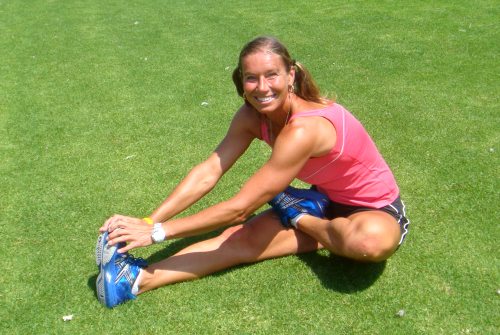
Front Split Hamstring Stretch
An excellent and seemingly impossible hip-flexor and hamstring stretch is a front split. It is easier to perform than it looks. Not too many people have such joint restrictions that they are not capable of doing front splits. The rest of us have tight and shortened muscles and that is possible to change. To determine if you are capable of doing front splits, try this test:
Test if you are capable to do front splits
Step forward with the right leg into a deep lunge. If your thighs are almost in one line, just like in a split, it means that your hip joints and their ligaments do not prevent you from doing the front split, but rather the tightness of your hamstring, calf muscles, quadriceps, and the hip-flexors. That is good news! A regular practice of the front split will increase your flexibility in a short time.
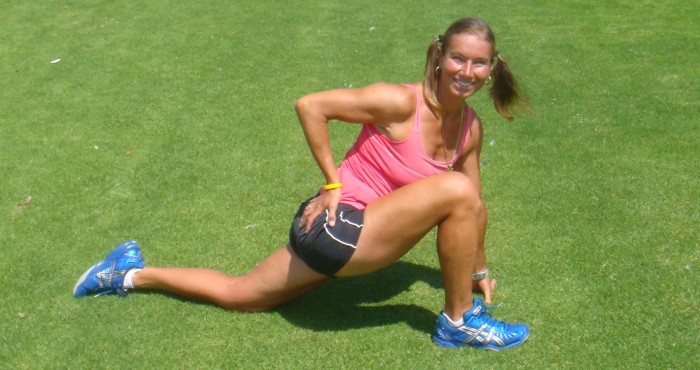
It is time to practice
Get down on the ground on your left knee and extend the right leg as forward as possible. Keep your right knee straight and the foot pointing up. The left leg and foot should be in one line—do not point the knee or foot outward or inward. Concentrate on the muscles where you feel the most tension. It could be the hamstrings and calves of the front leg or the hip flexor and quadriceps of the back leg.
Leaning forward will intensify the hamstring stretch and leaning backward will increase the hip flexor and quadriceps stretch.
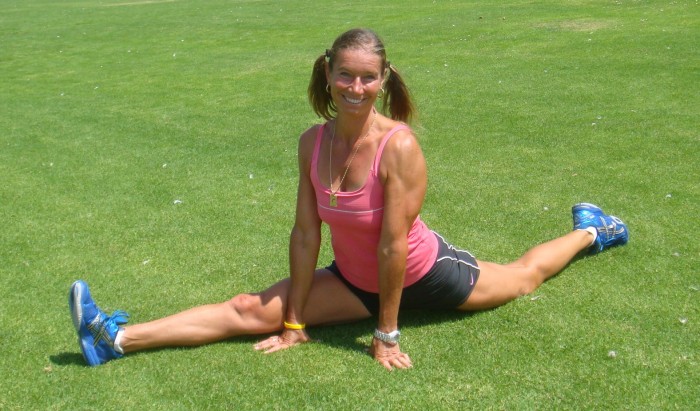
Ultimately, you want to have your body perfectly vertical. If it is hard to stay vertical, grab on something for better balance. As you get more flexible and closer to the ground with your hips, you will be able to support yourself on your hands. Keep doing the front split regularly and you will be surprised how fast you progress.
Flexible and functional hamstrings and hip flexors are important for optimal and injury-free athletic performance. Your movement on the court will be quicker and more explosive, and your tennis game will enter higher levels.
And then you can also be in a center of attention at the parties when in the middle of your dance, you just get down on the floor into a perfect split. How cool is that? 🙂
.

